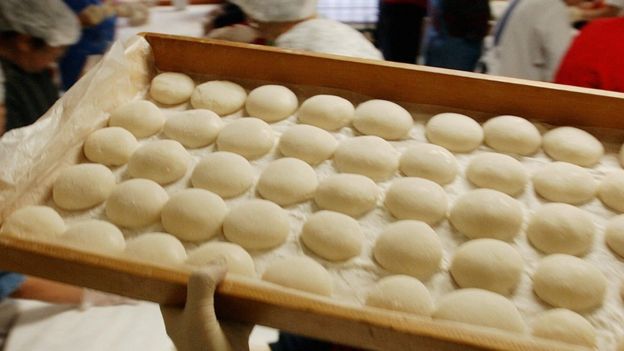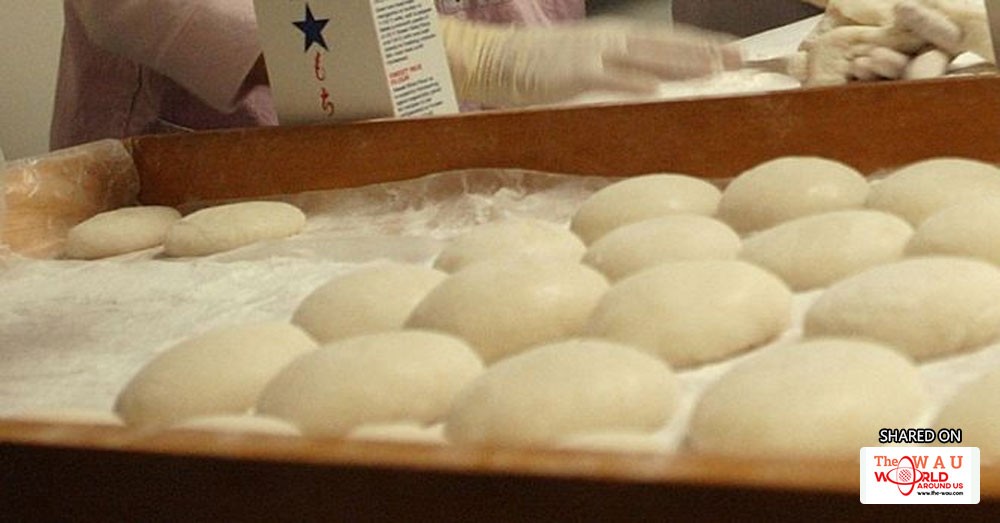They may seem harmless, but each year the hard-to-eat snack claims several lives, prompting annual warnings from officials.
What is a mochi?
The cakes, known as mochi, are cute round buns made of soft and chewy rice.
The rice is first steamed and then pounded and mashed.

The resulting sticky rice mass is then formed into the final mochi shape and baked or boiled.
Families traditionally celebrate New Year by cooking a vegetable broth in which they heat the mochi.
How do they kill?
The buns are chewy and sticky. Given they are far bigger than bite-sized, they need to be laboriously chewed before swallowing.
Anyone who can't chew properly - like children, or the elderly - will likely find them hard to eat.

Image captionIf you can't chew them, please cut them, emergency services urge
If not chewed but simply swallowed, the sticky mochi gets stuck in the throat - and can lead to suffocation.
According to Japanese media, 90% of those rushed to hospital from chocking on their new year's dish are people aged 65 or older.
What's a safe way to eat them?
Chew, chew, chew. If that's not possible, the rice cakes need to be cut into smaller pieces.
Each year, authorities issue public warnings in the run-up to the new year festivities advising that people - especially the very young and elderly - should only eat mochi cut down to smaller little chunks.
Yet despite the warnings, each year there continue to be deaths linked to the dish.
At the turn of 2014 to 2015, the number of casualties peaked at nine. In 2016 it was one, while last year two people died.
Each year, many more end up in critical condition in hospitals across the country.
Share This Post














